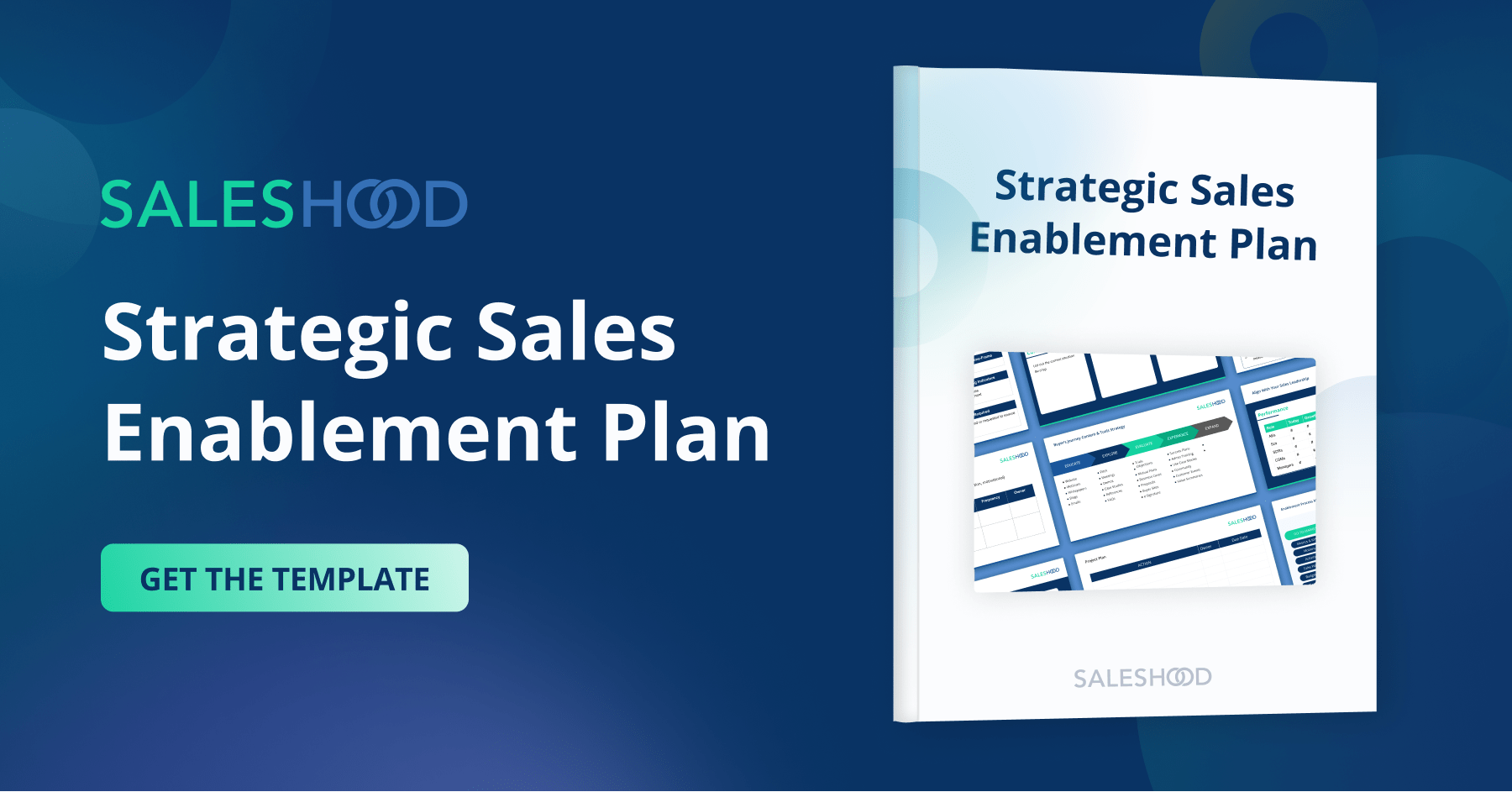How To Align Sales and Marketing Strategies
There’s a secret to scaling a fast-paced growth technology company; messaging sales and marketing alignment across every customer-facing employee and every employee, partner and customer at a company. Many marketers believe the heavy lift to create and launch a new brand and messaging platform is where the work ends for Marketing. That’s not the case. How do companies ensure that employees understand the brand value and messaging are conversationally competent in their conversations with potential customers?
Sales and Marketing Alignment
Healthy sales and marketing alignment is strengthened with sales enablement goals and metrics that are transparent and well-balanced. Sales enablement done right improves sales knowledge, tracks sales effectiveness, and boosts sales productivity. Sales enablement done right also informs marketing about what’s working and what needs to be improved. Sales enablement is the last mile of a company’s go-to-market strategy aligning marketing planning and sales execution. Companies today that are building high performing sales teams are realizing huge improvements in attainment, win rates, deal sizes, and time to ramp when marketers prioritize sales enablement. I’m inspired by many marketing leaders who regularly sit on calls with sales teams, build playbooks , crowdsource battle-cards reps love, direct new hire training, and run sales training calls. They are committed to the success of their sellers and their sellers know it. Message alignment with sales enablement is the key. Since presentation slides are so core to sales enablement and messaging alignment, we’re going to dive deep into how to use new presentation slides and how corporate messaging will drive sales and marketing alignment. Below is a checklist for activating content and scaling that content out to the entire organization. It’s the secret sauce of sales and marketing. Getting CROs and CMOs to work together on these strategies will increase the likelihood that your teams will become conversationally competent. Sales and marketing alignment will result in improvement in sales efficiency and content effectiveness.
Get Aligned On Messaging and Presentation Slides
It’s important to remember that slides are for discovery as much as they are for presenting. Put yourself in the shoes of your sales and customer teams when creating slides, training, and coaching aids. Please ask questions like:
- How would you use the slides?
- How can the slides be used to drive a conversation?
- How can the slides be used to drive meeting momentum?
- Do the slides have value in the conversation beyond repeating what the seller is saying?
Slides are an important tool for communicating a company’s corporate messaging to a potential customer, so they need to be concise, clear, and easy to understand. Here are a few tips and tricks to improve sales and marketing alignment by maximizing the impact of your sales presentation slides.
Step #1: Consider the Buyer’s Journey
Create core messaging slides for different conversations across the buyer journey. It’s a good idea to create micro-pitches that map to each step in your funnel and/or each conversation.
Here are some examples of how to align messaging for marketing and sales.
-
- Elevator Pitch – what do you do?
- Customer Story – tell me a story of company like me that solved problem ABC
- Product Demonstration – how do you do it?
- Custom Presentation – how will it solve my problem?
- Objection Handling – answer my specific objections
- Business Case – how will I justify the solution?
- Mutual Success Plan – what does success look like?
Step #2: Create Relevant and Useful Presentation Aids
Add speaker notes and slide transition questions for each slide, asset and pitch to drive an engaging conversation. Make sure the questions are open-ended and not closed ended. They should engage the audience. Create a strong closing slide. Include a “next steps” last slide for deal momentum and action. Be clear and prescriptive on ideal next steps in the process.
Utilize slides as a resource. Put all slides in one deck including customer stories, product slides, proposal slide templates and any other supporting slides so that you can toggle between them easily in one presentation, depending on what questions arise during the conversation with the sales team.
Step #3: Roll-Out a Formalized Messaging Certification
The foundation of every sales training and sales onboarding program is grounded in pitch practice and messaging certification. Updated messaging, including corporate presentations should systematically be rolled out to all customer-facing employees. Technology is available to help companies scale a messaging certification program. Tech tools include using video role-playing, assessment, peer accelerated learning and dynamic content sharing internally and with customers.
The process for rolling out a messaging certification starts with publishing the new messaging content, assessing knowledge, practicing communicating the updated messaging, having managers and peers provide feedback, applying to real customer scenarios and measuring the impact of the conversation effectiveness. The ultimate measures are improved customer satisfaction, more engaged buyers and new business revenue growth.
Anecdotally, when listening to sales calls and talking to customers, feedback will be positive and you’ll hear the same words and messages being shared resulting in positive and consistent customer experiences. The lifecycle of messaging alignment starts by launching a new brand message and is considered successful when your employees, partners and customers are echoing the same brand message.
Step #4: Measure Leading Indicators Sooner Than Later
The next step to aligning your sales and marketing teams is to measure their effectiveness. It’s important to look for leading indicators that are early on in the ramping or sales cycle. We don’t want to wait until it’s too late to effect change. Looking to measure the impact on new business closed and quota attainment will not yield the right outcome-focused coaching and development teams need to be successful. The leading sales performance indicators will vary by role. Here are some examples of how to measure the effectiveness of your messaging with role-based activity metrics:
Sales Development
For your sales team, measuring the number and quality of these five components will give you an idea of the relationship between them. For example, if proficiency begins to score lower, does it affect the number of meetings scheduled, or possibly the number of responses to emails sent in number three. You’ll begin to see relationships between the five measurements across individual sellers and on average across your sales team that will allow you to gauge performance of sales development.
-
- Certification
- Sales pitch proficiency
- Emails sent
- Calls made
- Meetings scheduled
Account Executives
Similarly to sales development for your sales team, you’ll want to track the quality and relationship of the steps across your account executives. Typically these roles are focusing more on up-selling and current customer relationships so they pay a critical role in stability. But regardless of the strategic sales focus of your account executives, gauging effectiveness is critical to improving performance.
-
- Certification
- Sales pitch proficiency
- Call recap summary emails
- Pipeline created
- Deal progression
Read more about ways to improve sales performance by measuring leading and lagging indicators here.
 |
Step #5: Verify Buyer Engagement and Feedback
Another great way to align sales and marketing teams on messaging is to focus on the buyer experience. Look for buyer signals—such as content engagement or frequency of communication—to integrate data insights with content reporting, deal scoring and forecasting. Sharing content with buyers and competently pitching products is important data to track. The holy grail of effectiveness is capturing insights from buyers before, during and after their sales presentations and sales calls in order to refine your approach.
It’s hard to close the loop on messaging alignment without data on buyer feedback. The companies that integrate sales enablement data with revenue intelligence data will win the deals.
Aligning sales enablement with messaging is something every company struggles with. Look for gaps in your process.
Are you making messaging content accessible and digestible?
Are you certifying your teams on your new messaging?
Are you measuring the impact of the conversation on the deal progression?
Don’t forget to utilize managers to coach teams over video, one on one training, and practice pitch delivery.
Tips and Tricks For Marketers To Embrace Sales Enablement
There are some simple actions marketers can take to embrace sales enablement and ensure that marketing efforts and activities are supporting, impacting, and influencing strategic sales enablement initiatives.
Talk (And Listen) To Salespeople And Sales Leaders Often
Set up regular calls with sellers and front line sales managers so you stay informed. Join sales manager weekly calls, monthly or quarterly calls so you can hear the discussion, challenges, and opportunities they are encountering. Many times, this insight will impact your priorities and initiatives. Also, be sure to share your priorities and get feedback from sales teams and sales leaders so you can ensure your time is being spent in the best place to make an impact for the sales team. It’s important not to work in a vacuum–find out what’s working and what your sellers need and create materials that will move the revenue for your sales people. They should be perceived as the ultimate customer.
Sit in on Customer Sales Calls
As a general rule of thumb, marketers should try to spend at least one hour a day on calls with sales teams, talking to live customers; the benefits are huge. I’m always inspired by what customers say and also how salespeople position and sell value. There is so much to learn from customer sales calls. There should be targets and goals for the amount of hours a weak marketers should spend on customer sales calls.
Crowdsource Sales Tools and Battle-Cards
Set up a regular cadence to collect presentations and tools from winning deals including emails sent during the sales process. Get sales teams to share their winning presentations and have them share feedback on the tools and playbooks you’re building. Crowdsource competitive battle-cards too by having sales reps share the objections they sare hearing from customers and prospects.
Create Just-In-Time Sales and Marketing Playbooks
Create sales and marketing playbooks that map out buyer profiles, presentations, qualification criteria, discovery questions, compelling events, value drivers, common objections, and competitive traps. Turn content into playbooks that are dynamic, easily accessible and in context. Map the playbook content and tools to the sales process with clear to do’s. Learn more about what just-in-time Guided Selling looks like.
Make Content Short and Personable
Marketers are great at creating sales tools and a lot of them. Sometimes less is more. I’d like to encourage marketers to create less tools and create tools that are short and very personalized with video storytelling. Also answer the question: what’s in it for me? (WIFM) for your sales reps too.
Map Tools and Sales Training to the Sales Enablement Process
Create tools that are mapped to the sales enablement process and sales methodology. As marketers, we should understand what the sales enablement process is and be able to translate customers’ stories, product training, and corporate presentations to the buyer’s journey. We should also be able to easily pinpoint the critical areas of crossover and impact that marketing tools have on the sales enablement process.
Measure The Effectiveness of Content and Tools Created
Know which tools are being used and how effective they are in helping salespeople close business. Track views, downloads and pipeline influence by asset. Share scorecards highlighting the return on all sales tools created. Oftentimes marketing will track visibility of efforts but not conversion or close rates–this is a critical mistake. It is important for marketing to create overall awareness, but it is also important for marketing to create quality leads so the sales team can close business.
Be Open To Constructive Feedback
Marketers should have think skin. Ask for feedback and be grateful. Be ready to rethink assumptions. The reality is salespeople and sales leaders are the feet on the street and are at the pulse of what’s working and what needs to be improved.
Summary
The best marketers understand these tips and embrace them. The best CMOs share these guiding principles with sales and holds their teams accountable. The fastest growing, high-performing organizations align sales and marketing by creating shared sales enablement goals and metrics. Do all of this well, and not only will your sales team be on its way to closing more deals, but your sales and marketing organization will be better aligned, better informed, and more productive than ever before.



